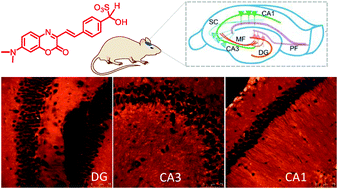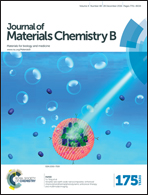A fluorescent probe for bisulfite ions: its application to two-photon tissue imaging†
Abstract
A benzoxazinone based fluorescent probe for the specific and efficient detection of bisulfite ions in aqueous medium is described. The probe formed a bisulfite/sulphite adduct with an associated turn-on fluorescence response in the red wavelength region. No interference was observed in the detection process from all possible competing anions and molecules, including cyanide ion, cysteine, homocysteine and glutathione. In addition, the probe showed a fast response time, low detection limit, and cell membrane permeability. Furthermore, the probe was two-photon excitable, enabling imaging of endogenous bisulfite ions in HeLa cells as well as in deep tissues from different organs of mouse.



 Please wait while we load your content...
Please wait while we load your content...